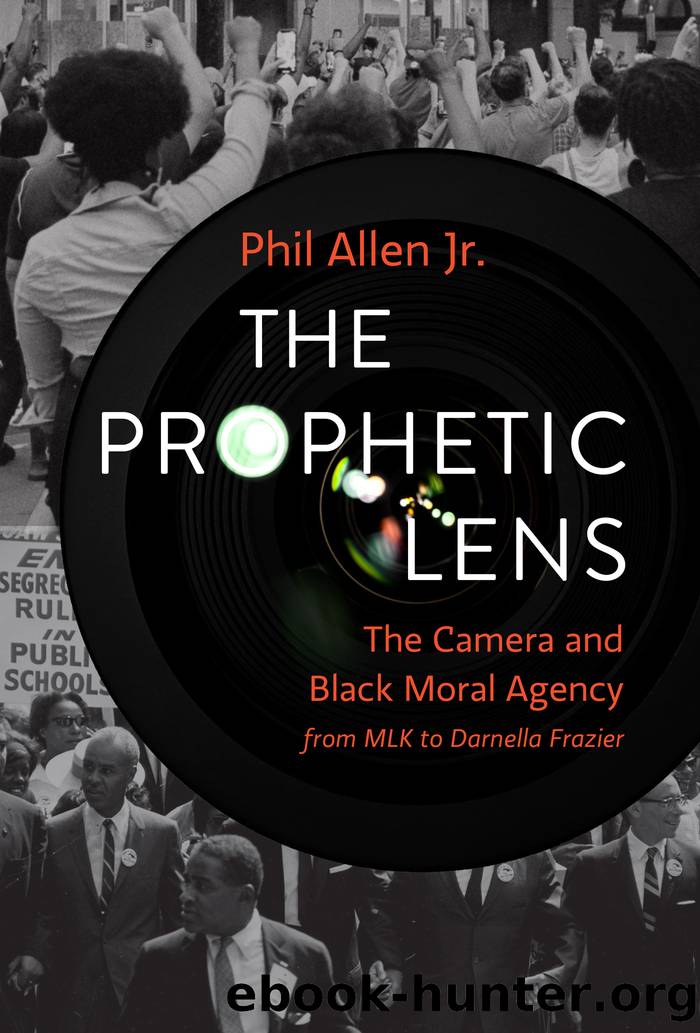The Prophetic Lens by Phil Allen Jr

Author:Phil Allen Jr. [Allen, Jr., Phil]
Language: eng
Format: epub
Tags: REL067120 RELIGION / Christian Theology / Liberation, SOC001000 SOCIAL SCIENCE / Ethnic Studies / American / African American & Black Studies, SOC052000 SOCIAL SCIENCE / Media Studies
Publisher: Fortress Press
The Journalist as Ally
By the time the Civil Rights Movement began in the 1950s, television news broadcasts were relatively new. This platform was only about ten years in the making, dating back to the 1940s. It could be said that television and the Movement grew up together. Many of the networksâ journalists, particularly those from the North, not only saw firsthand what was happening in the South and reported it; they had their own experiences of violence from White Southerners. Whether they intended to or not, they were allies to the African American community. They played a crucial role in telling the hidden narrative that many White Americans were content to keep concealed from the nation and that African Americans wanted exposed. The presence of news journalists and their cameras during the Movement was mutually beneficial for television and for Kingâs strategy to expose anti-Black violence and inequities and the inherent injustice of segregation.
Television was critical in puncturing the collective conscience hardened by apathy or ignorance. The Civil Rights Movement provided the platform that transformed television into a news medium with serious social and political implications.17 Coverage of the Movement was very much like what we see today on twenty-four-hour news stations, covering events like the O. J. Simpson trial in 1995 or the âJanuary 6â Capitol insurrection attempt. In other words, coverage was constant, captivating the countryâs attention, and had serious racial dynamics and implications. Coverage of the Movement was the first of its kind. Peter J. Boyer, a writer for the New York Times, says the Movement was âthe first running story of national importance that television fully covered.â He goes on to say, âTelevision brought home to the nation the civil rights struggle in vivid images that were difficult to ignore.â18
In 1955, during the Emmett Till murder trial, John Chancellor, a reporter for NBC, was interviewing African Americans and White people to get their reactions to the acquittal of Roy Bryant and his half brother, J. W. Milam, by an all-White jury. He noticed a mob of White men, who were unhappy with him being there in Mississippi asking questions. Knowing he could not get away from them as they approached him, he turned around with his tape recorder, pretending it was a camera, and pointed it at them.19 He said, âAll right, come on. The whole world is going to know what youâre doing to me.â They did not realize it was not a camera, but the thought of being recorded and broadcasted to the world scared them enough to leave him alone.20 This was/is the cost of even the appearance of allyship.
The first major event broadcasted on the news for a national audience to witness took place on September 4, 1957, in Little Rock, Arkansas, as African American students courageously integrated Central High School. The cast was present. There was the Arkansas National Guard, news reporters, angry White students and parents, and nine African American students. Elizabeth Eckford found herself alone as she departed the bus.
Download
This site does not store any files on its server. We only index and link to content provided by other sites. Please contact the content providers to delete copyright contents if any and email us, we'll remove relevant links or contents immediately.
On the Front Line with the Women Who Fight Back by Stacey Dooley(4788)
The Rules Do Not Apply by Ariel Levy(4773)
The Lonely City by Olivia Laing(4686)
Bluets by Maggie Nelson(4420)
The Confidence Code by Katty Kay(4142)
Three Women by Lisa Taddeo(3308)
Not a Diet Book by James Smith(3286)
Inferior by Angela Saini(3198)
Confessions of a Video Vixen by Karrine Steffans(3193)
A Woman Makes a Plan by Maye Musk(3164)
Pledged by Alexandra Robbins(3094)
Wild Words from Wild Women by Stephens Autumn(3028)
Nice Girls Don't Get the Corner Office by Lois P. Frankel(2964)
Brave by Rose McGowan(2757)
Women & Power by Mary Beard(2669)
Why I Am Not a Feminist by Jessa Crispin(2656)
The Girl in the Spider's Web: A Lisbeth Salander novel, continuing Stieg Larsson's Millennium Series by Lagercrantz David(2634)
The Clitoral Truth: The Secret World at Your Fingertips by Rebecca Chalker(2617)
Women on Top by Nancy Friday(2476)
